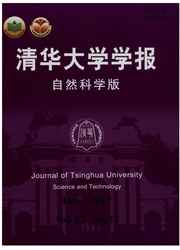

 中文摘要:
中文摘要:
为降低精馏塔冷热公用工程总费用,该文采用分馏塔的总组合曲线(column grand composite curve,CGCC)对精馏塔进料位置与进料状态进行同步优化。基于实际接近最小热力学状态(practical near-minimum thermodynamic condition, PNMTC)的CGcc可由2条理论曲线即全塔精馏线与全塔提馏线构成,2条曲线的交点O既为精馏塔的理论最优进料点,又为进料预热的分割点。以精馏塔冷热公用工程费用节省量为目标可先确定交点O的位置,再结合焓差值△Hn,def,可定量确定精馏塔的最优进料位置,最终达到同步优化进料位置与进料状态的目的。该文以苯一甲苯塔为例,其冷热公用工程费用最大节省量为1.24RMB/h,对应的最优预热量为1.98MW,焓差值△Hn,def为0.038MW,对应的最优进料位置为第21块塔板。基于CGCC方法计算的最优进料位置和进料状态与AspenPlus模拟软件结果相同,误差仅为1%~3%,表明此方法准确可行。
 英文摘要:
英文摘要:
The study used the column grand composite curve (CGCC) method to simultaneously optimize the feed location and feed conditions for a distillation column to reduce the total utility costs. The CGCC method based on the near-minimum thermodynamic condition (PNMTC) can be decomposed into two theoretical curves for the overall rectifying and overall stripping curves. The intersection point O of the two theoretical curves is not only the ideal feed point, but also the partitioning point for the amount of feed preheating. The total cost of the cold and hot utilities is used as the objective function to optimize the feed preheating and to identify the intersection point location O. The optimal feed location in the distillation column is then found using the enthalpy difference, △Hn,def, between the intersection point and the actual feed point. The feed location and the feed conditions are then optimized using the CGCC curves. A benzene and toluene column was used to evaluate the accuracy of this graphic method. The maximum savings for the cold and hot utilities is about 1.24 RMB/h. The feed preheating is 1.98 MW and the enthalpy difference, △Hn,def, is 0. 038 MW. The optimal feed location is the 21th stage. The CGCC results compare well with Aspen Plus results with differences only 1%~3%.
 同期刊论文项目
同期刊论文项目
 同项目期刊论文
同项目期刊论文
 期刊信息
期刊信息
